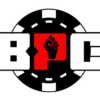You should already have an idea of which hands to play preflop from the previous lessons. Knowing when to deviate according to player tendencies is the next step and will help you further develop your game. When a player enters the pot, you should know whether he represents a strong hand or a weak hand. Mastering this is actually pretty simple, especially when using a heads up display (HUD). By focusing on player profiles, you can start to exploit their playing style. This lesson will help you do just that.
To identify an opponent’s playing style, it’s super helpful to have a HUD with either PokerTracker or HoldemManager. I realize some online poker sites do not allow HUDs and/or tracking software, and if this is the case, you will need to pay close attention to every little detail. If you do have a HUD, however, here are a few stats that will help you start making some simple preflop adjustments.
BASIC PREFLOP HUD STATS
The VP$IP stat represents how often a player voluntarily puts money in the pot before the flop. A quick glance at this stat will tell you whether a player is loose or tight and includes all limps, calls and raises. While VP$IP determines whether a player is loose or tight, PFR determines their level of preflop aggression by representing how often they raise when entering the pot. The higher a player’s VP$IP and PFR, the wider range of hands they’re likely to have when entering the pot. Conversely, a lower VP$IP or PFR means a stronger range of hands. They are not one in the same however.
ADJUSTMENTS FOR TIGHT PLAYERS
Ok so again, the VP$IP and PFR stats gives us a general estimate of each player’s hand range depending on their preflop action. If a player at our table has a VP$IP of 19 and PFR of 17 after 500 hands, it means he only plays 19% of his hands, 17% of which he raises before the flop. There isn’t much passivity in this player’s game so we can assume that he is a tight-aggressive player based on these stats alone.
Using this information can help us increase our edge in a couple different ways. Since this specific opponent is only playing 19% of his hands, it’s reasonable to believe that he will generally not have very many weak hands when he enters a pot. Therefore, we should avoid playing against this player without a strong hand, especially when out of position, any time he comes in for a raise.
On the other hand, playing just 19% of his hands means he’s folding the other 81%. We can take advantage of this by stealing his blinds. We’re never going to turn a huge profit against this type of player, so unless you plan on coolering him, picking up small pots over and over is very important (and profitable). Basically, the tighter a player is, the more we should look to steal.
ADJUSTMENTS FOR LOOSE PLAYERS
Looser players will have a much higher VP$IP. Remember that PFR determines a player’s preflop aggression. So, a player with high VP$IP but low PFR means he is limping and calling raises preflop with a very wide range of hands. These are the loose-passives and calling station types that we can take to value town constantly. If a player has both a high VP$IP and a high PFR, it means he’s playing a lot of hands and playing them aggressively. So, essentially a maniac.
Let’s say we have a player to our right who has a VP$IP of 65 and PFR of 33 over a 200 hand sample. From these stats alone, we know that this specific player is playing 65% of his hands, half of which he raises. We can also assume that he’s an impatient player and is at the table to gamble. Can he have a premium hand when he opens the pot? Of course, but the chances are much less likely compared to the 19/17 player mentioned earlier. Therefore, we should consider playing more pots with him. When he limps, we can often isolation raise for value and when he raises, we can either 3-bet for value or call to keep his range wide.
Players with a large gap in their VP$IP and PFR, such as 50/5 or 43/10, are also playing a ton of hands but they are playing them much more passively. Since these players aren’t raising very often, widening our 3-bet range for value does us no good. Instead, we should call with high implied odds type hands and try to stack them. It’s basically the same as playing versus a nit when these players raise. Where we make the most money versus these players is constantly hammering them with value bets in position. So, isolating them with a raise when they limp is going to be very profitable.
MOVING BEYOND THE BASICS
Here’s a few additional stats beyond the basic VP$IP and PFR that will help you build player profiles and gain an edge over your opponents. It’s important to remember sample size however. The more hands you have on a player, the more reliable a stat becomes. So keep that in mind before you go crazy with any exploitative adjustments.
Button Steal – this shows how often a player raises from the button when everyone else folds. If a player has a very high button steal percentage, we can and should defend our blinds more often. Calling is an option to keep his range wide but 3-betting is preferable as long as we’re taking into account his continuing range versus a re-steal.
Fold BB vs Steal – this shows how often a player folds his big blinds to a steal. I like having two stats for this: fold big blind versus button steal and fold big blind versus small blind steal. The difference is against the button they’ll be out of position postflop but in position versus the small blind. Two very different situations. It should go without saying that anyone with a high fold to steal, in either situation, is reason enough to consider raising their blinds very often. This is literally the easiest method of improving one’s win rate.
Cold Call – this shows how often a player cold calls a preflop raise. Players with a high cold call percentage means they’re at the table to see flops. Take this into consideration before deciding whether to play your hand when these players have position on you.
Fold to 3Bet – this shows how often a player raises preflop but folds to a re-raise. Players who have a high fold to 3bet percentage open themselves up to be heavily exploited, especially those with a higher PFR. This where we should be 3betting a polarized range made up of both value hands as well as bluffs. Conversely, players with lower fold to 3bets are candidates for 3betting with a wider linear range depending on their PFR stat. The lower their PFR, the more likely we should fold and only call in high implied odds type situations.



